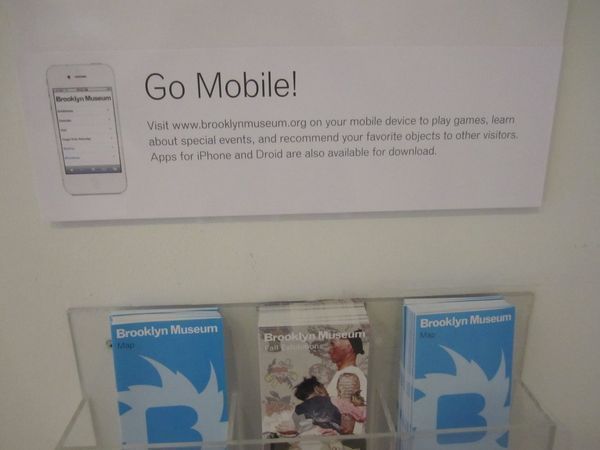QR in the New Year?
A while back, I reported that we were in the process of a trial period with QR codes. We’ve just taken a look at the stats, so I’m giving a run down of what we’ve seen. If I asked the Magic 8-Ball if we’d continue with QR in the New Year, I think the response might be anything from “outlook not so good” to “don’t count on it” or, possibly, “cannot predict now.”
In general, our staff at the Visitor Desk is seeing increased QR awareness among visitors and a rise in demand for the mobile palm card we produced, but stats will help us tell the story. If you remember, we were trying codes in several ways. If you don’t, it might be a good idea to review the first post before continuing with this one.
We put a code on the back of our entrance tags that served as an introduction what visitors might find behind QR codes throughout the building. Every visitor coming in the door gets one of these tags, but only 1.77% of visitors responded by scanning the code.
Of the visitors that scanned the code on the entrance tags, an average 41% of those users (.728% of total visitors) scanned the tags that would let them mobile search The Dinner Party, Luce Visible Storage or play Gallery Tag. At first glance this looks like a win, right? Well, that’s true until you compare pre and post QR code use. These numbers are a little tricky for various reasons, but when looking at Gallery Tag as an example we saw a five-fold drop in use….and five-fold is a very conservative extrapolation from the stats.
Of the visitors that scanned the code on the entrance tags, an average 3.37% of those users (.059% of total visitors) scanned the codes that were placed on objects. That may seem very low overall, but finding the codes we had placed on 30 objects out of the 3000+ on view, was a bit of a task—I’m honestly surprised the numbers were as high as they were. In terms of the content, visitors “liked” the poems much more than they “disliked” them with a 3-1 margin, so using this material as a trial proved to be pretty sound.
Lastly, we put a QR code on all the advertising for The Latino List, so people could download the exhibition’s iPhone app. Given the amount of advertising that was done, it seems incredible that the code was scanned only 118 times. Yes, that’s right, 118 scans, but this figure seems right in line with Adam Greenfield’s research at Urbanscale.
So, I think what we end up with is simply a project that isn’t an overwhelming success or failure. Certainly, QR on advertising didn’t do so well for us. QR use in the building is overall very low, with visitors seeming to favor application-like uses for it. However, compared to pre-QR code use, the use of those applications dropped significantly. This suggests that QR might be appropriate for special projects, but that we probably need to stay away from it as a baseline visitor amenity if we are to be at all inclusive about how we serve content.
If you are using QR in your museum and have stats on use, I’d be curious to hear if your experience is the same or differs. If you are a visitor who’s used QR here, I’d love to know your thoughts on your experience. What do you think? Is this a win, lose or draw?

Shelley Bernstein is the former Vice Director of Digital Engagement & Technology at the Brooklyn Museum where she spearheaded digital projects with public participation at their center. In the most recent example—ASK Brooklyn Museum—visitors ask questions using their mobile devices and experts answer in real time. She organized three award-winning projects—Click! A Crowd-Curated Exhibition, Split Second: Indian Paintings, GO: a community-curated open studio project—which enabled the public to participate in the exhibition process.
Shelley was named one of the 40 Under 40 in Crain's New York Business and her work on the Museum's digital strategy has been featured in the New York Times.
In 2016, Shelley joined the staff at the Barnes Foundation as the Deputy Director of Digital Initiatives and Chief Experience Officer.

